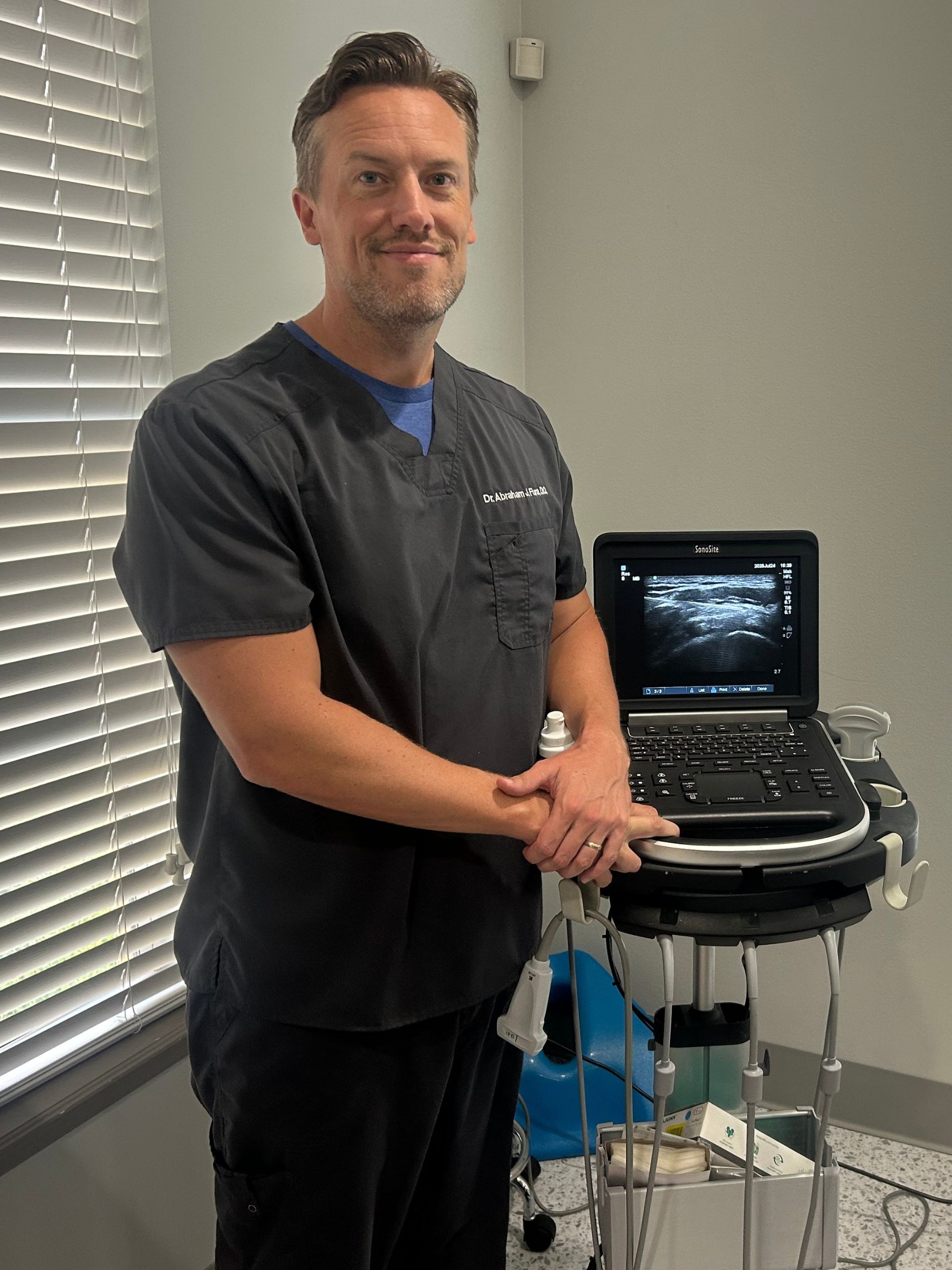
OLECRANON BURSITIS
Elbow bursitis, medically known as olecranon bursitis, is the inflammation of the bursa at the tip of your elbow. This condition causes a visible, often dramatic swelling at the back of the elbow that can look like a golf ball under the skin. Sometimes called "student's elbow" or "plumber's elbow" due to common causes, this condition can be painless or quite uncomfortable depending on the underlying cause. While the swelling may look alarming, elbow bursitis is very treatable with proper diagnosis and targeted therapy.

RISK FACTORS
Elbow bursitis develops when the olecranon bursa becomes irritated and fills with extra fluid, causing noticeable swelling. This can happen suddenly or develop gradually over time.
The most common cause. Leaning on hard surfaces for extended periods, such as working at a desk, can irritate the bursa. This is why it's often called "student's elbow."
A hard blow to the tip of the elbow, such as falling directly onto it, can cause the bursa to fill with blood and become inflamed (hemorrhagic bursitis).
If bacteria enter through a cut, scrape, or insect bite near the elbow, it can cause infected bursitis. This requires immediate medical attention and antibiotics.
Certain conditions like rheumatoid arthritis, gout, or kidney disease can increase the risk of developing elbow bursitis due to systemic inflammation.

RECOGNIZING THE SIGNS
The most obvious sign of elbow bursitis is swelling at the tip of the elbow. The severity of other symptoms depends on whether the bursitis is caused by irritation, trauma, or infection.
A soft, goose egg-like swelling at the tip of the elbow that can range from small to golf ball-sized. The skin can move freely over the swelling.
Discomfort when leaning on the elbow or when the bursa is touched. Simple bursitis may have little pain, while infected bursitis is often very painful.
When swelling is significant, it may become difficult to fully bend the elbow, though straightening is usually not affected.
The skin over the bursa may feel warm and appear red, especially if infected. Fever may accompany septic bursitis.
The swollen area is often tender when pressed, and you may feel fluid movement under the skin (fluctuance).
The bursa fills with excess fluid, which may be clear (serous), bloody (hemorrhagic), or infected (purulent) depending on the cause.
Don't let elbow bursitis limit your daily activities or work. Whether your swelling appeared suddenly or has been building over time, we can determine the cause and provide targeted treatment. Contact us today to learn about our advanced options for draining fluid, reducing inflammation, and preventing recurrence.